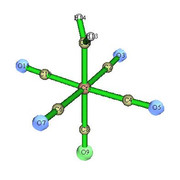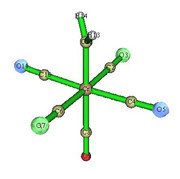The ETS-NOCV function in the version released many days ago was found to be broken. Please update to latest version. I have already fixed this problem the day before yesterday.
Hi,
I was very happy when I saws recently that Multiwfn was extended with ETS-NOCV, many thanks Tian.
I have a Windows version of Multiwfn 3.8 downloaded on 27.02.2022. I tried to reproduce the ETS-NOCV example of (CO)5Cr=CH2 according to the manual (4.23.5) using the given example xxx.fch files. The Table with the NOCV pair energies etc. could be successfully reproduced. Following the instructions of the manual I selected High quality grid, then "2 Show isosurface of NOCV pair density", "Input the index of the NOCV pair of interest": 1. In a separate run I tried pair 2. Instead of the nice NOCV pair orbitals of charge transfer shown in the manual, I obtained core s orbitals of the oxygens, as they were visible only after I decreased the atomic size. I attach the two Figures.
I hope I did not misunderstood the instructions in the manual and would be grateful for checking the issue.

